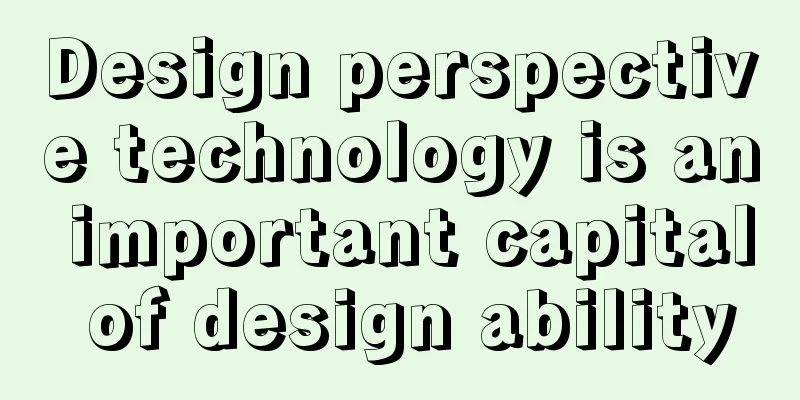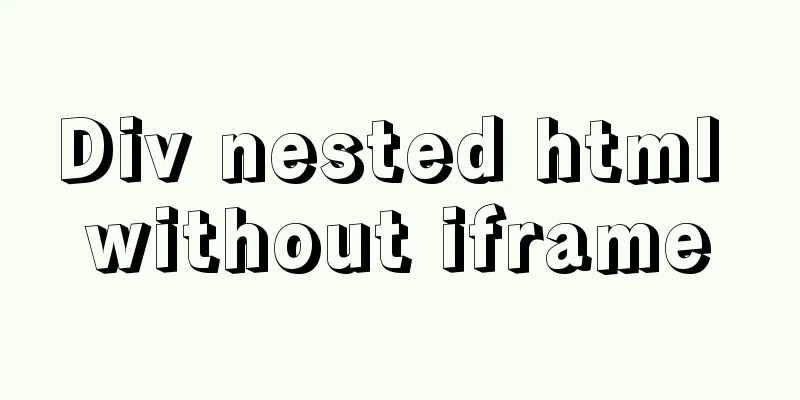Design perspective technology is an important capital of design ability

|
A design soldier asked: "Can I just do pure design and not participate in the actual project production? Those things are too boring and not suitable for me." I replied: "What is pure design? What do you think suits you?" Xiaobing was very confident: "It means just proposing concepts without doing anything concrete. Look at those creative directors, aren't they all..." I could hear what he was thinking: "Are you the creative director? Also, do you not want to participate in the actual project because you can't do it well?" Soldier: "... This..." From a positive perspective, we can say that a soldier who doesn't want to be a general is not a good soldier. This guy wants to succeed, wants to stand tall, is more proactive, and has certain demands. From a negative perspective, we can think that he wants to learn to run before he has learned to walk, he has an impetuous mentality, is irresponsible, has high expectations but poor skills... You see, this is our wonderful workplace culture, you can say both sides, and he is neither a good person nor a good person. However, this phenomenon has been around for a long time. I have heard the argument that "people who really do creative design don't do concrete work" more than 1,000 times. This leads to the following question: Is it true that after reaching a higher level of design, we no longer need to touch technology? We won’t discuss the question of “whether new recruits can choose not to work in technical positions” here, because the answer is obvious and not worth discussing. It would be more useful for us to talk about the specific relationship between design thinking and technology. First of all, we need to clarify these two concepts: design is a creative communication based on aesthetics and market demand , not the so-called infinite creativity that is empty and pretentious; technology is a creative means to solve problems , not the craft of weaving sacks in a factory. 1. Technology must be mastered and sensitive to it Some of my design director friends (who are not starting their own businesses but working for others) can basically be divided into two categories. After working in specific design work for 5-10 years, they turn to product definition, design training and analysis, and pre-sales breakthroughs in market development. Then the scope of their considerations naturally shifts from the technical level to qualitative areas such as social relations, capital operation, and market analysis. The other type becomes a standard design leader, leading the team to develop new design concepts and models. Such guys will conduct in-depth research on the overall design aspects of product and customer research. The newbies' misconception is often that the first type of leader should oversee the scope of the second type of leader and adopt the second type of leader's way of thinking. However, if there really is a second type of leader in place, they feel that this guy lacks the comprehensiveness and depth of the first type of leader. The inner monologue is: "Why don't you let me do it? I will definitely be much better than him!" But no matter which of the above, we should maintain a deep understanding of the technical level and forward-looking thinking. Why? The current world is a society dominated by industry and commerce. No matter what products and services, they are all driven by technological progress. The fact is that if a designer does not understand the progress and development of technology, he will soon be left at the forefront of design. In 2007, I remember having a meeting with a large domestic handheld device manufacturer. The design director of the other party asked me: "Your interface design is good. Is it made with MAYA?" I answered: "Oh, I usually use Cinema4D for icons, which is faster." The other party said disdainfully: "Oh, we all use MAYA6.0, cinema4D is too old." I was young and ignorant, so I said mischievously: "Well, we sometimes use it, isn't it upgraded to version 8.5?" Of course, the software version cannot directly lead to the conclusion that the design concept is not avant-garde, but it is a dangerous signal. If they don’t even understand the status of the most personal tools, I find it hard to believe that their designers will actively study changes in product technology, how technological progress improves product functions, and changes in user psychology and consumer behavior. 2. Technology can broaden your horizons and deepen your thinking Most of my friends have experienced this situation. The first sentence of many junior designer friends who ask you questions is: "How did you make this work?" This is a manifestation of technical poverty. In many cases, when your creativity is blocked and your visual expression ability is insufficient, it is due to insufficient technical reserves. You don’t know how a visual method should be completed through software and hand-drawing, and you can’t use your tools well - this leads to the embarrassment of "dare to think but not dare to do, dare to do but cannot produce". In-depth research on technology can also expand the share of design resources. You will gain more experience with design tools, meet more technical elites, introduce many new problem-solving ideas, learn to do it yourself when encountering difficulties, and cultivate the habit of actively seeking resources and independent thinking. Aren’t these all the skills you need in the design process? You can also understand the difficulty of the technology and the implementation cycle, and will no longer curse the technical staff for their incompetence and for not satisfying your "creative desires." There is a myth: "If I spend too much time studying technology, then am I not wasting time for innovative thinking?" Friends who have this idea are very naive. There is no conflict between design thinking and technology at all. Your conflict lies in that you do not have the determination and perseverance to spend more time on design. You spend more time in bars, shopping, boring soap operas and waiting for others to give you free education. You lack initiative and have to find an excuse, and confuse most of the ignorant newbies like you. What Samsung of South Korea does is to purchase technology and patents to support creativity, but at the same time it also establishes design schools around the world and fully implements Samsung's unique design system in the enterprise. You can ask yourself, how can you afford to do something that you want the best of both worlds? The meaning of hard work is to be diligent in silence and achieve phased results. Therefore, when you ask yourself “why does my design lack feeling?”, first ask yourself how much you have done to prepare the technology behind this design. 3. Technology is an important asset of design capability The accumulation of technology does not only mean that you can use more software to work collaboratively and know more technical vocabulary so that you can talk fluently in meetings. It also does not mean that you act like a senior when treating rookies. Technical knowledge brings an overall understanding of the product. If you hope to further develop in the direction of product design, then you should have a clear understanding of the technical aspects and background surrounding the product so that you can propose more reasonable solutions. As a designer, you may not be able to fully devote yourself to studying the technology itself, nor do you have to publish a paper on siggraph to prove the advancement of your design. We should calmly maintain our attention and application of technology and respect all producers and technical developers. To take a step back, even if you don’t use technology, you should know what kind of technical capabilities and talents can help you when facing a design problem. If you really understand what I mean, you should also understand that we are not the world's real manufacturing power and technological power. We still need to be more humble and take a longer way. If a designer only knows how to talk, it’s like a peacock spreading its tail. Behind the glamorous appearance, his butt will definitely be exposed. |
<<: JavaScript Document Object Model DOM
>>: Two problems encountered when deploying rabbitmq with Docker
Recommend
MySQL sorting feature details
Table of contents 1. Problem scenario 2. Cause An...
Software Testing - MySQL (VI: Database Functions)
1.MySQL functions 1. Mathematical functions PI() ...
A complete list of commonly used Linux commands (recommended collection)
Table of contents 1. System Information 2. Shutdo...
Solution to mysql server 5.5 connection failure
The solution to the problem that mysql cannot be ...
Detailed introduction and usage examples of map tag parameters
Map tags must appear in pairs, i.e. <map> .....
Implementation steps for building Webpack5-react scaffolding from scratch (with source code)
Table of contents webpack5 Official Start Buildin...
Using better-scroll component in Vue to realize horizontal scrolling function
About Recently, in the process of learning Vue, I...
Vue+js realizes video fade-in and fade-out effect
Vue+js realizes the fade in and fade out of the v...
Detailed introduction to MySQL database index
Table of contents Mind Map Simple understanding E...
How to implement hot deployment and hot start in Eclipse/tomcat
1. Hot deployment: It means redeploying the entir...
Practical way to build selenium grid distributed environment with docker
Recently, I needed to test the zoom video confere...
Vue and react in detail
Table of contents 1. Panorama II. Background 1. R...
win10 mysql 5.6.35 winx64 free installation version configuration tutorial
mysql 5.6.35 winx64 free installation version con...
Vue implements the countdown component for second kills
This article shares the specific code of Vue to i...
MySQL 8.0.12 installation and configuration method graphic tutorial
Record the installation and configuration method ...









